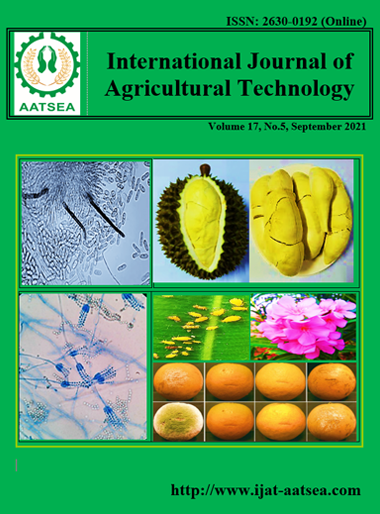GIS-based site suitability analysis for biomass power plant in Bohol
Main Article Content
Abstract
Site suitability is an essential process in determining potential sites for power plant development with respect to some economic and environmental factors, such as road access, land surface features, crop distribution, and the population’s energy demand. In terms of the working population and land usage, agriculture remains to be Bohol’s largest sector. Agriculture covers more than half of the province's total land area. It was found that the municipalities of Dagohoy, San Miguel, Talibon, Trinidad and Ubay are abundant in coconuts, accounting for 38% of agricultural land and cultivating rice on about 32% of their agricultural area. The large croplands offer an abundant supply of agricultural residues. Along with an increasing number of people located some distance from croplands, electricity may be used efficiently. Furthermore, the municipality of Ubay was identified as the most suitable site for plant development through the integration of the GIS approach that allowed the analysis of the top rice and coconut areas in the province to determine the most suitable location that balanced economic and environmental criteria within the biomass supply
Article Details

This work is licensed under a Creative Commons Attribution-NonCommercial-NoDerivatives 4.0 International License.
References
Bennie, J., Huntley, B., Wiltshire, A., Hill, M. O. and Baxter, R. (2008). Slope, aspect and climate: Spatially explicit and implicit models of topographic microclimate in chalk grassland. Ecological Modelling, 216:47-59.
Bohol, Provincial Government (2006). Bohol Agricultural Master Plan, 2006-2026.Executive Summary Report. Series Vol. 4.
Chen, J. (2014). GIS-based multi-criteria analysis for land use suitability assessment in City of Regina. Environmental Systems Research, 3:13.
Energy Department (2018). Power Development Plan 2017-2040. Philippine Department of Energy. Executive Summary Report .Vol. 51, Issue 1.
Gomes, E. and Lins, M. (2002). Integrating Geographical Information System and multi-criteria methods: A case study. Annals of Operations Research, 97:131-141.
Jeong, J. S. and Ramírez-Gómez, Á. (2017a). A multicriteria GIS-based assessment to optimize biomass facility sites with parallel environment - A case study in Spain. Energies, 10.
Jeong, J. S. and Ramírez-Gómez, Á. (2017b). Renewable energy management to identify suitable biomass facility location with GIS-based assessment for sustainable environment. Energy Procedia, 136:139-144.
Joshua, J. K., Anyanwu, N. C. and Ahmed, A. J. (2013). Land Suitability Analysis for Agricultural Planning Using GIS and Multi Criteria Decision Analysis Approach in Greater Karu Urban Area, Nasarawa State-Nigeria. Journal Article - African Journal of Agricultural Science and Technology, 1:14-23.
Malczewski, J. (1999). GIS and Multicriteria Decision Analysis. New York: John Wiley and Sons. 408 p.
Malczewski, J. (2004). GIS-based land-use suitability analysis: A critical overview. Progress in Planning, 62:3-65.
McKendry, P. (2002). Energy production from biomass (Part 1): Overview of biomass. Bioresour Technol, 83:37-46.
Philippine Coconut Authority (2018). Retried from https://pca.gov.ph/index.php/resources/coconut-statistics
Philippine GIS Data Clearinghouse (2020). Retried from http://philgis.org/province-page/bohol
Phua, M. and Minowa, M. (2005). A GIS-based multi-criteria decision making approach to forest conservation planning at a landscape scale : a case study in the Kinabalu Area, Sabah, Malaysia }. Landscape and Urban Planning, 71:207-222.
Provincial Planning and Development Office (2018). Bohol Island Power Development Plan (BIPDP). September. Retried from http://www.ppdobohol.lgu.ph/plan-reports/development-plans/bohol-island-power-development-plan-bipdp/
PSA (2018). Volume of Production by Region and by Province.
QGIS Official Website (2020). Retried from https://www.qgis.org/en/site/about/index.html
Quinta-Nova, L., Fernandez, P. and Pedro, N. (2017). GIS-Based Suitability Model for Assessment of Forest Biomass Energy Potential in a Region of Portugal. IOPConference Series: Earth and Environmental Science, 95. https://doi.org/10.1088/1755-1315/95/4/042059
Reyes, N. C. R. (2018). Visayas Power Situation and Outlook. June.
Rosillo-Calle, F. and Woods, J. (2012). The Biomass Assessment Handbook. In The Biomass Assessment Handbook. https://doi.org/10.4324/9781849772884
Sevilla, K., Remolador, M., Baltazar, B., Saladaga, I., Inocencio, L. C., Rosario, M. and Models, A. M. (2015). Comparison of MODIS-Based Rice Extent Map and Landsat-Based Rice Classification Map in Determining Biomass Energy Potential of Rice Hull, 9:1163-1166.
Woo, H., Acuna, M., Moroni, M., Taskhiri, M. S. and Turner, P. (2018). Optimizing the location of biomass energy facilities by integrating Multi-Criteria Analysis (MCA) and Geographical Information Systems (GIS). Forests, 9:1-15.


